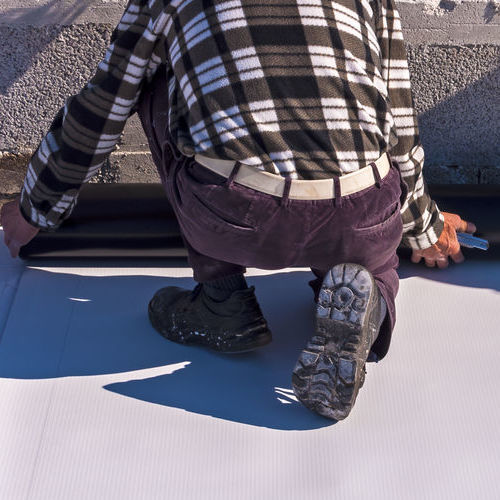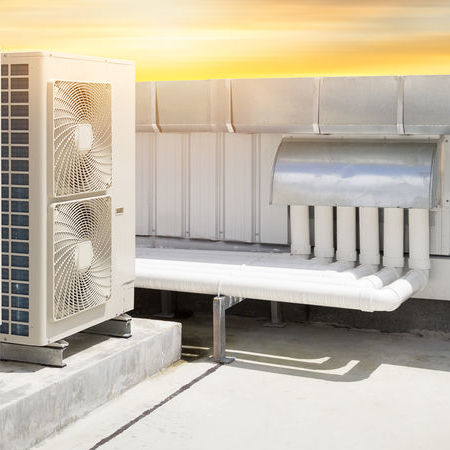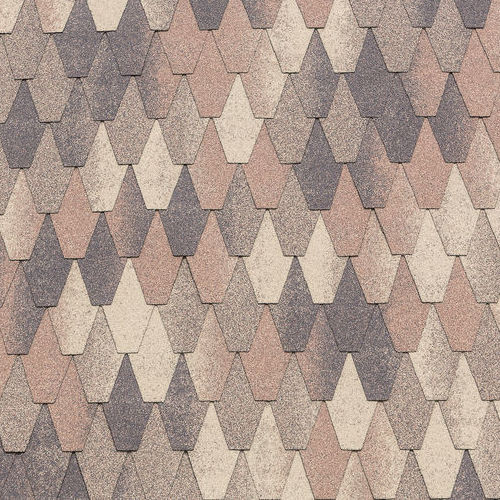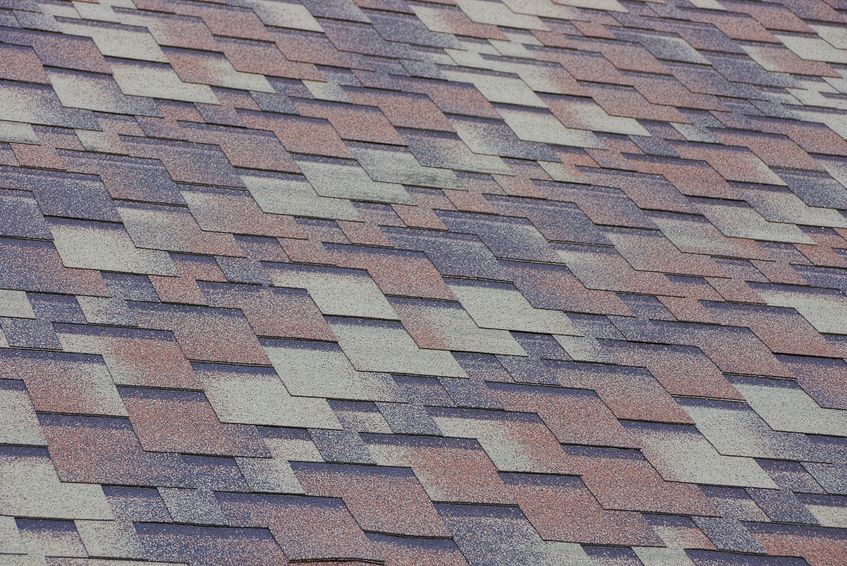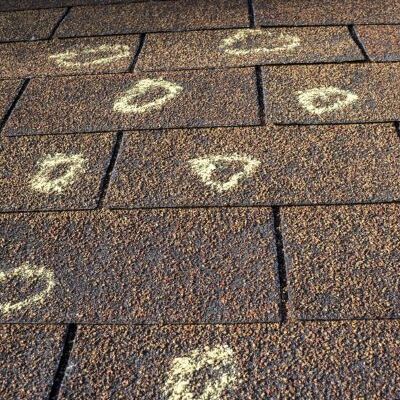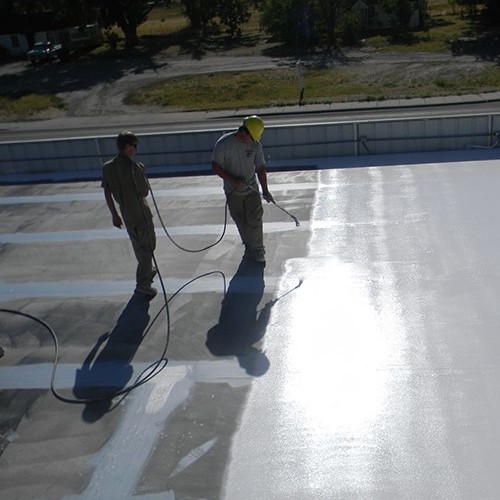
What Roof Coating Does
Because flat roofs are so common on commercial buildings, almost every building manager or owner faces common problems with these types of roofs. Typically, the main problem faced is leaking due to water collecting on the roof. Instead of repairing these leaks over and over again—and spending more and more—many managers opt to apply roof coatings. These often elastomeric coatings go directly over the roof, forming a seamless barrier that seals pinhole leaks, and prevents new leaks from forming.
Coatings, however, are used for more than just a sealant to stop leaks. When it comes time to replace your commercial roof, you might instead want to opt for a roof coating. Instead of tearing off the old roof and installing a new one, you can have a coating applied to preserve the old roof, extending its life for several more years to come. As a money-saving replacement option, the coatings can be re-applied every 10 years or so to continue preserving your roofs.
Additionally, coatings are valued because they improve your building’s overall energy efficiency. They have highly reflective properties, protecting the roof from UV radiation, and keeping it cooler in the summer and warmer in the winter. If you are considering a commercial roof coating in Austin, TX, let the experts at Texas Cool Roofing & Waterproofing help you. We provide a complete range of cool roofing solutions. Learn more about our services by calling 512-617-7335.
What is the best roof coating?
When choosing a roof coating for your building, you have several types of coatings available. Each has different properties that will be valued more than others. Some of the most common include:
- Acrylic: These are water-based coatings especially fitting for areas of high UV radiation in which reflectivity is required for improved cooling.
- Asphalt: Very effective coatings to use on asphalt-based roof substrates and for colder weather.
- Polyurea: A polyurethane-based coating that’s ideal for hail-prone areas or for roofs that get high roof traffic.
- Silicone: Another coating valued for high UV reflectivity, silicone is really good for roofs exposed to heavy, frequent rainfall.
When to apply roof coating
If you’re planning to apply an elastomeric roof coating like silicone or acrylic, you want to make sure you apply it at the right time. Coatings need to be applied on warm, sunny days so it will dry and cure properly. Moisture always needs to be avoided. If it’s rained recently or rain is forecast, you want to avoid applying the coating.
How long do roof coatings last?
The thickness of the roof coating application will normally determine how long it lasts. Ideally, you want the coating to last about 10 years before you reapply it. Your location and weather conditions will also affect the coating’s lifespan. Different types of coatings also have different lifespans. Elastomeric coatings, for instance, often last longer than asphalt coatings.
Does roof coating stop leaks?
Preventing leaks is one reason people value roof coatings. Because the coatings form a seamless barrier over your roof, they help prevent new leaks from developing. Smaller leaks are also sealed up when the coating is applied. Before you apply the coating, you will need to repair any significant leaks.
A coating application is often the most cost-effective way to stop leaks. It’s certainly more effective and less expensive than repairing every leak on your roof. Most coatings also receive a 20-year watertight warranty and most coatings will prevent leaks well past their warranty period.
Do roof sealers work?
Roof coating and roof sealant are sometimes used interchangeably as terms for the same material, and sealants are very effective at preserving your roof by preventing leaks and improving energy efficiency. Other benefits include fire resistance and mold growth prevention.
How much roof coating do I need?
Generally, when using elastomeric roof coatings, the amount of coating needed will vary depending on the type of roofing you’re covering. For most flat roofing materials like foam, modified bitumen or built-up roofing you’ll need about 1 gallon of coating for every 50 square feet of roof. Metal roofing will also vary. Corrugated metal roofs need about 1 gallon of coating for every 80 square feet of roof, while smooth metal roofs need 1 gallon for every 100 square feet.
Can roof coating be applied over shingles?
Roof coatings are primarily used for commercial buildings and only rarely used for residential applications. When used for residential buildings, it’s usually for flat roofs. It’s normally not recommended to use coatings on asphalt shingles. The coating can shrink and cause the shingles to cup or curl, which loosens granules. Coatings can also seal in moisture and cause the roof deck to rot. In some cases, adding a coating will void manufacturer’s warranties. Building and zoning codes as well as HOA codes can also be violated.
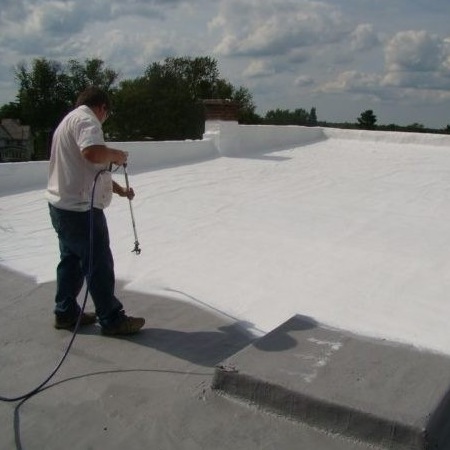
Can roof coating be used on wood?
Roof coatings can be applied to other surfaces besides roofs. You can, for instance, coat wood siding, but cautions must be taken not to completely seal the wood because the wood must be allowed to breathe. When applying a coating, you have to be careful to avoid trapping moisture.
If you are looking to install a roof coating for your commercial roof in Austin, TX, you can always count on Texas Cool Roofing & Waterproofing. See what we can do for you today by calling 512-617-7335.

